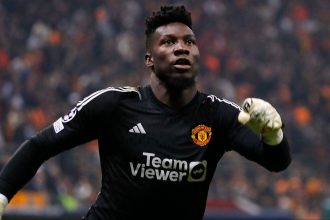Few clubs experienced as turbulent a summer as Aston Villa.
After finishing sixth last season and reaching the Champions League quarter-finals, expectations were high.
Yet concerns over Profit and Sustainability Rules (PSR) quickly took over.
Rumours emerged that Villa would have to sell before they could buy, casting doubt over their ability to compete at the top level. The biggest worry was losing key players.
Emiliano Martínez looked destined for Manchester United at one stage, while Ollie Watkins became the subject of interest from both the Red Devils and Newcastle.
Both stayed, but uncertainty persisted until deadline day.
Villa did manage to add fresh faces, bringing in Evan Guessand alongside the high-profile arrivals of Harvey Elliott and Jadon Sancho, but the feeling lingered that Villa’s business was reactive rather than strategic.
That instability has been reflected on the pitch. The team are still searching for their first league win, finally scoring their opening goal of the season in a 1-1 draw with Sunderland.
With just three points from their opening fixtures, Villa currently sit in the bottom three.
It is an ominous start for a club balancing the demands of Europe and domestic competition.
Remembering Christian Benteke's Aston Villa stint
For many Villa supporters, the situation evokes memories of Christian Benteke, whose meteoric rise at the club ended with a high-profile departure.
Signed from Genk in 2012 for £7 million, Benteke became an instant success.
His debut season saw him score 19 Premier League goals, effectively saving Villa from relegation and cementing his place as one of the league’s most feared strikers.
Over the next three seasons, Benteke scored 49 goals and added 12 assists in 101 appearances, numbers that underlined both his importance and consistency.
Yet while his goals lit up Villa Park, his ambition proved equally significant.
Just a year into his stay, he handed in a transfer request before signing a new contract that included a £32.5 million release clause.
It was a clear indication that Benteke wanted to keep one eye on the Champions League. That clause was triggered by Liverpool in 2015, shortly after Benteke helped Villa reach the FA Cup final.
His time at Liverpool included flashes of brilliance – none more so than his overhead kick against United – but he struggled in Jürgen Klopp’s pressing system and was eventually sold to Crystal Palace.
The Benteke saga left a lasting impression. It showed Villa’s capacity to identify elite talent, but also their vulnerability when those players set their sights elsewhere.
That lesson still resonates a decade later, particularly with how this current squad is shaping up.
Why Morgan Rogers could be the modern echo of Benteke
Fast-forward to the present, and another star may be heading down a similar path: Morgan Rogers.
At just 23 years old, Rogers has already become indispensable for Aston Villa, operating as an attacking midfielder.
Leaving Manchester City in 2023 in search of regular football, he joined Middlesbrough before Villa swooped just six months later for £8 million.
Since then, this “magician” – as described by pundit Micah Richards – has been on the rise.
Last season, he played 54 matches in all competitions, including 37 in the Premier League, where he scored eight goals and registered 11 assists.
His contributions extended to Europe too, as he played 12 times in Villa’s run to the Champions League quarter-finals, adding four goals and three assists.
The data highlights just how central Rogers has become.
Matches Played
37
Goals
8
Assists
10
Progressive Carries
113
Progressive Passes
123
Last season, he was involved in 18 goals, and his creativity was backed up by an average of 3.55 progressive passes per 90 minutes.
He also drove Villa forward with the ball at his feet, averaging 3.29 progressive carries per 90.
In the final third, his impact was telling: he attempted 1.59 shots per 90, with 0.58 hitting the target, producing a shot accuracy of 36.4%.
Rogers is not only a volume player but also efficient.
His 73.2% pass completion may not sound high at first glance, but when paired with a progressive passing distance of 96.2 metres per game, it reflects a player constantly looking to take risks and break lines.
He is also a reliable creator, averaging 3.04 shot-creating actions per 90, a number that places him among the most effective attacking midfielders in the league.
However, in a recent interview, he appeared to hint that his ambitions may lie beyond the Midlands, discussing the shirt number he could take at a new club:
“I picked that [number 27], but I wasn’t necessarily sold on it. But then I had a good loan, and it kind of stuck with me. So, it’s always the number that I’ll pick if I go to a club, if…”
Indelicate phrasing has sparked inevitable comparisons with Benteke’s path.
For Villa, the concern is obvious.
Rogers may not be actively seeking a move now, but his words were enough to stir unease among supporters who still remember the pain of Benteke’s exit.
Whether history repeats itself will depend largely on Villa’s ability to match the ambitions of their brightest star.
For now, the echoes of the past feel uncomfortably loud.









